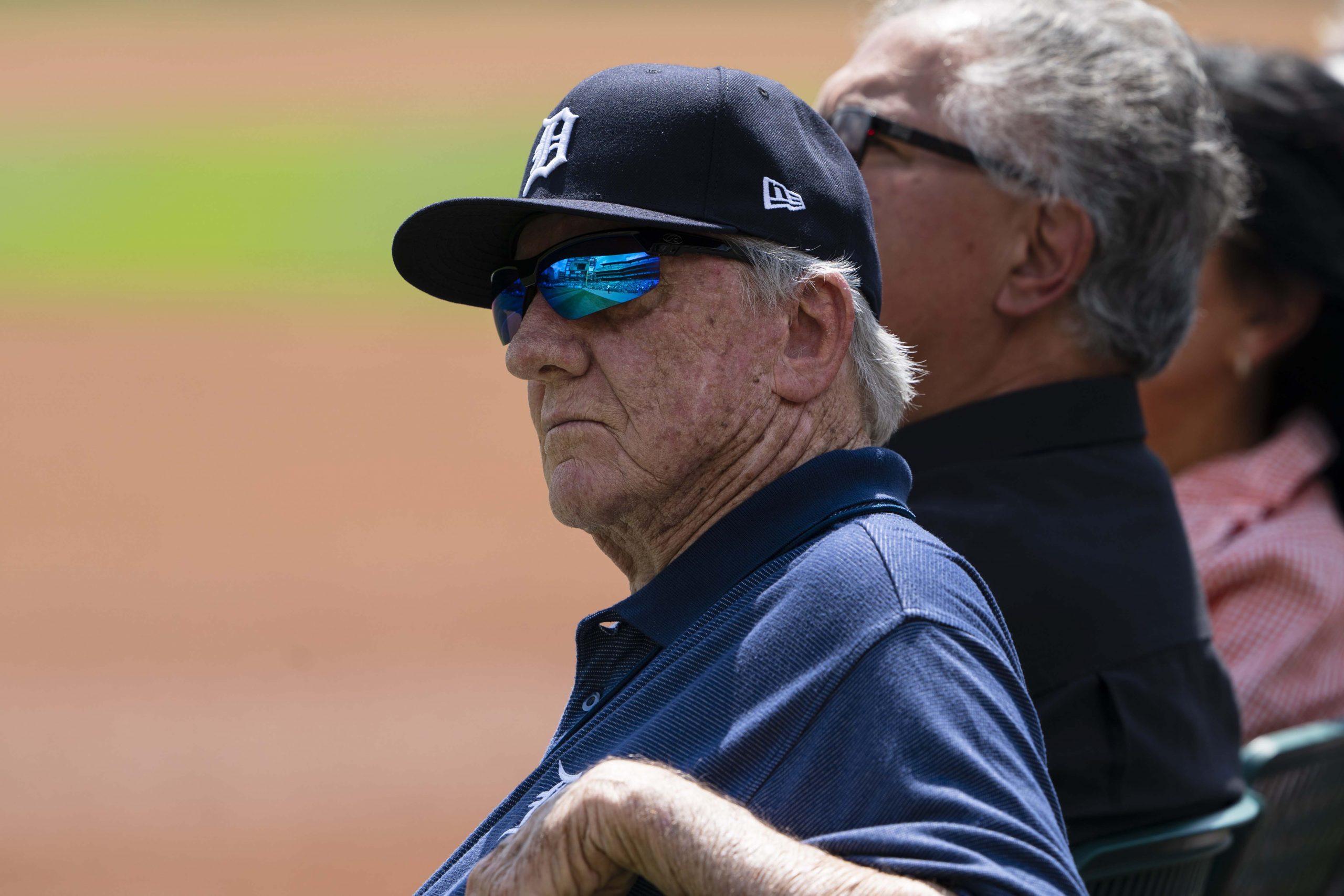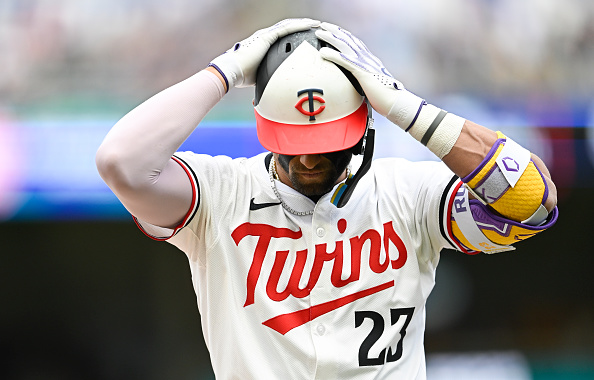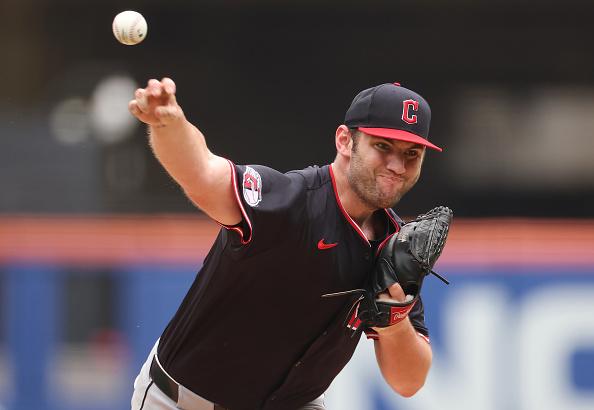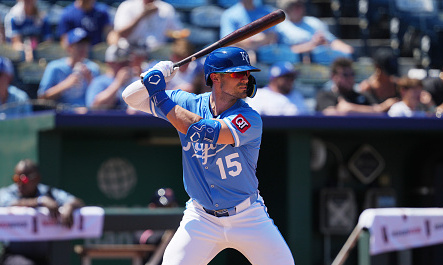Debuting at 18 years old and wearing No. 25, Al Kaline played 30 games for the 1953 Detroit Tigers. In his first full season in 1954, Kaline received MVP votes and finished third in AL Rookie of the Year voting. He also switched to his eventually iconic No. 6.
In 1955, Kaline established himself as a premier hitter in the American League, leading the junior circuit in hits and batting average. He was the third 20-year-old to record 200 hits in a season, following fellow Tiger Ty Cobb in 1907 and Buddy Lewis in 1937. Since 1955, only Vada Pinson and Alex Rodriguez have joined that club. He recorded more walks than strikeouts for the first season in a streak of 14. Kaline was an All-Star and finished runner-up to Yogi Berra for AL MVP.
In 1956, Kaline posted 194 hits to go along with 27 homers (again) and 128 RBI, a career-high. He finished third in MVP voting and made his second All-Star Game.
By 1957, Kaline had established himself as one of the best all-around players in baseball. After dominating advanced defensive metrics (not available in the period) for his first few seasons, Kaline was given his first career Gold Glove. Kaline amassed 20 fielding runs, the first of his three 20-plus seasons.
Ending the decade, Kaline notched his second and third Gold Gloves in 1958 and 1959. He received MVP votes in both seasons, and he got his batting average over .300 once again. 1959 was a particularly dominant campaign as he led the AL in slugging percentage and OPS.
Coming into his prime, Kaline continued to rake. In the ’60s, Kaline averaged 140 hits per season. His .296 batting average was solid, and his OPS+ was an efficient 141. OPS+ measures OPS (on-base plus slugging) through ballpark and league adjusted numbers. 100 is average. With Kaline’s 141, he was 41 percent above average. For context, Yoan Moncada posted an OPS+ of 141 in 2019, the 13th best in baseball.
Kaline was selected to 10 All-Star games in eight years (including two in 1960 and 1961). He won an additional seven Gold Gloves to bring his tally up to 10. Kaline was the first outfielder to record 10 Gold Gloves. Since his 10th in 1967, Kaline has been joined by Willie Mays (1968), Roberto Clemente (1970-1972), Ken Griffey, Jr. (1999), Andruw Jones (2007), and Ichiro Suzuki (2010) as the only outfielders to earn 10 Gold Gloves.
Despite missing a significant chunk of the 1968 season, Kaline’s greatest moment as a player came in the season. In the year known for its pitching prowess (pitchers Bob Gibson and Denny McLain won each league’s MVP), Kaline helped the Tigers to the 1968 World Series, snapping a 23-year drought that lacked a trip to the Fall Classic.
Game 1 of the World Series was quiet for all Tigers as NL MVP Gibson fanned 17 batters in a World Series-record performance. Kaline doubled with a runner on base, but Dick McAuliffe could not score from first. The Cardinals won, 4-0.
Without Gibson on the mound, the Tigers came alive in Game 2. Kaline went two-for-five with a pair of singles, being driven around both times. The Tigers won, 8-1.
Shifting to Detroit, the Cardinals rode two big innings to win 7-3 after falling behind early. Kaline opened the scoring with a two-run blast, but Detroit had only three hits for the rest of the game.
In Game 4, Gibson and McLain’s duel was cut short as the Cardinals chased McLain in the third inning. The lead was eventually stretched to 10-1 as Gibson fired a second game complete game. Kaline added two hits including a double.
Facing elimination, the Tigers dug themselves a hole as Mickey Lolich allowed three first-inning runs. Detroit struck back with a pair in the fourth, but Nelson Briles kept a lid on the game. In the bottom of the seventh, Lolich, McAuliffe, and Mickey Stanley got on-base in front of Kaline, and Kaline drove two home with a go-ahead single. It was the most impactful moment of the series to that point, and Kaline came in clutch. Stanley came home on the at-bat, and the Tigers held on to win 5-3.
Game 6 was not competitive as the Tigers scratched a pair of runs across in the second inning and added 10 in the third. Kaline drove in three runs in the inning, and Jim Northrup added a grand slam for good measure. Kaline mashed a homer in the fifth to make it 13-0 McLain breezed through the Cardinal lineup, not allowing a run until the bottom of the ninth. The Tigers won 13-1.
Kaline did not get on-base in Game 7, but the Tigers broke Gibson in the seventh inning, scoring three runs. The teams exchanged runs in the ninth, and the Tigers won 4-1, closing out a 3-1 comeback in the series and their first World Series triumph since 1945.
Kaline led all Tigers in hits, runs, doubles, home runs, slugging percentage, and OPS. He was passed over for series MVP as Lolich allowed five runs in 27 innings and won Games 2, 5, and 7. It was the only time that Kaline was able to play on baseball’s biggest stage.
After 1968, Kaline made the All-Star team in 1971 and 1974 and was an above-average hitter with his 122 OPS+. On Sep. 24th of 1974, Kaline recorded his 3,000th hit. He finished his career with 3,007.
In 1980, Kaline received 88.3 percent of the Hall of Fame vote, securing his spot in Cooperstown.
Kaline’s career spanned 22 seasons and 2,834 games with the Tigers. Kaline is the all-time Tiger leader in games played, home runs, walks, sacrifice flies, and four advanced metrics (base-out runs added, win probability added, situational wins added, and base-out wins added). Kaline only trails Ty Cobb in WAR, at-bats, plate appearances, hits, total bases, RBI, runs created, adjusted batting wins, extra-base hits, and times on base.
Among players to never win an MVP, only Eddie Murray, Mike Piazza, Manny Ramirez, and David Ortiz have MVP shares in their careers. Only 17 players have played more games than Kaline.
What made Kaline special?
Not only did Kaline play 22 years with one franchise, but he also affected the game with the five main tools: contact-hitting, power-hitting, baserunning, fielding, and arm strength. Kaline posted a career average just under .300 on his way to the 3,000-hit club and 399 home runs. While he was never a prolific base-stealer, he had 137 steals in his career and finished his career with 37 base runs.
In the field, Kaline is a darling of traditional and advanced metrics. Outside of the 10 Gold Gloves, Kaline led the AL in right field assists thrice and right field putouts five times. He is ninth in right field putouts and 21st for right field assists. In 1956 and 1958, he led all outfielders in assists. Fielding percentage is outdated in 2020, but it was fairly popular during Kaline’s time. He led the AL in fielding percentage five times in right and for all outfielders twice.
However, Kaline stands out more when you dive into advanced fielding metrics. Despite playing in the 1950s and 1960s, Kaline’s defensive career can be measured with total zone runs, introduced in 1953. The TZR formula is a mess, but it boils a defender’s performance down concerning the average in terms of outs made. Zero is average. 15 in a season is elite. In right field, Kaline led the AL in TZR eight times including mammoth tallies of 25 in 1958 and 23 in 1961. He is second all-time to Roberto Clemente for TZR in right.
Expanding the list to all outfielders, Kaline paced the AL five times including 29 TZR in 1961. He is ninth all-time, placing behind three of his 10-Gold Glove counterparts.
He is seventh among right fielders in career WAR, eighth in peak WAR, seventh in JAWS, eighth in offensive WAR, and seventh in wins above average. Among Hall of Fame right fielders, only Clemente and recent inductee Larry Walker also posted a positive defensive WAR for their career.
After retirement, Kaline stayed in the Tigers’ organization as a commentator and eventual front-office employee.
On April 6, 2020, Kaline passed away at the age of 85. He will be greatly missed and remembered as the baseball legend that he was.







